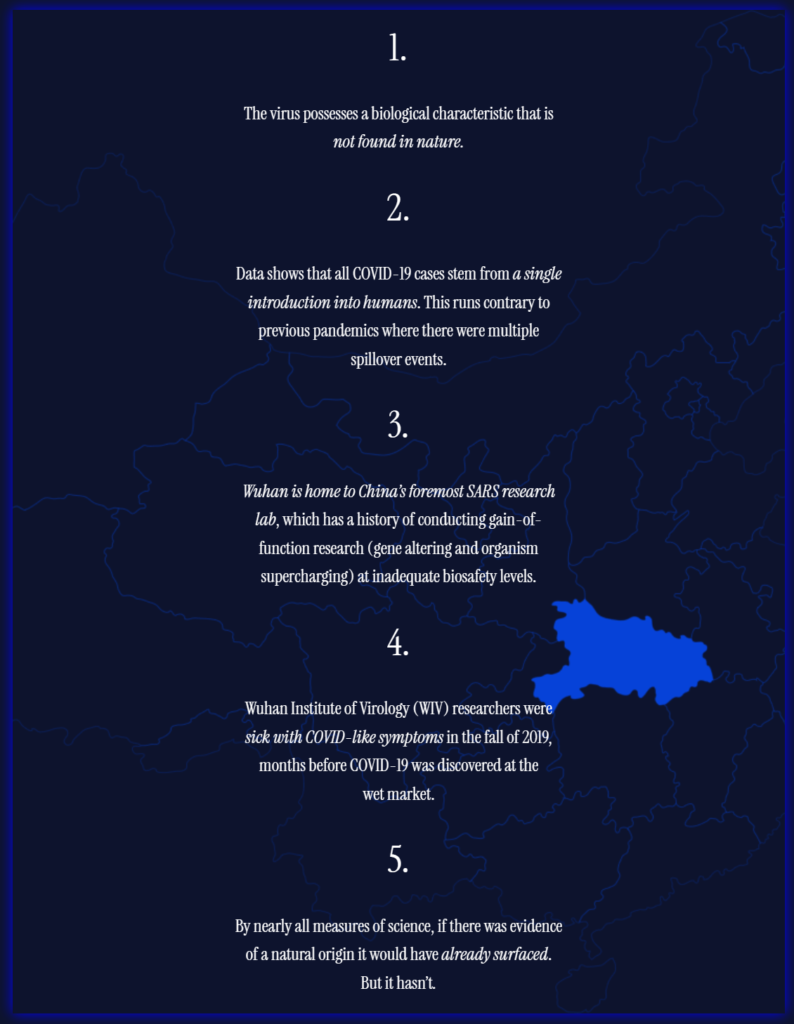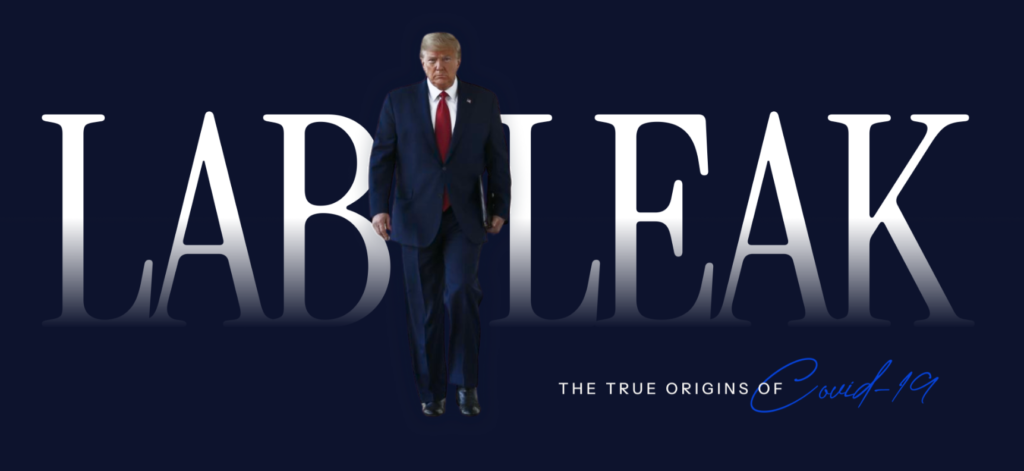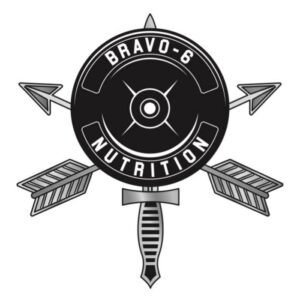On April 18, 2025, the White House unveiled a new webpage titled “Lab Leak: The True Origins of COVID-19,” making a bold case that the coronavirus behind the global pandemic was a man-made pathogen that escaped from a laboratory in Wuhan, China (White House Lab Leak Page). This move has reignited one of the most contentious debates of our time: where did COVID-19 really come from? The page’s claims, coupled with its replacement of key public health websites, have sparked both support and criticism. Let’s dive into what the page says, the evidence it presents, and why this issue remains so divisive.
The White House’s Core Argument
The new webpage asserts that COVID-19 most likely originated from a lab-related incident in Wuhan, specifically tied to gain-of-function research, which involves modifying viruses to study their behavior. It claims the virus possesses a “biological characteristic that is not found in nature” and argues there’s no solid evidence for a natural origin, such as a spillover from animals to humans. The page also suggests that earlier efforts to dismiss the lab leak theory, notably through the influential “Proximal Origin of SARS-CoV-2” publication, were orchestrated to push a natural origin narrative, allegedly at the prompting of Dr. Anthony Fauci.
Key Points from the White House Page
| Claim | Details |
|---|---|
| Lab Leak Origin | COVID-19 likely came from a lab in Wuhan due to gain-of-function research, with unique traits not seen in nature. |
| Proximal Origin Paper | Allegedly influenced by Dr. Fauci to discredit the lab leak theory and promote a natural origin. |
| EcoHealth Alliance | Used U.S. taxpayer funds for risky research in Wuhan; funding was suspended after violating NIH grant terms. |
| Government Oversight | Current mechanisms for overseeing gain-of-function research are inadequate and lack global standards. |
| Pandemic Response Failures | Criticizes lockdowns, mask mandates, and HHS’s alleged obstruction of congressional probes. |
Evidence Cited by the White House
To support its claims, the page points to several reports:
- CIA Report (January 2025): Concluded that a lab leak was likely but with “low confidence,” meaning the evidence isn’t conclusive (CNN Article).
- Energy and State Departments: Reached similar conclusions, also with limited certainty.
- House Select Subcommittee (December 2024): A Republican-led investigation determined the virus originated in a lab, based on extensive document reviews and interviews (Science Article).
However, these reports contrast with earlier CIA statements that there wasn’t enough data to pinpoint the virus’s origin, highlighting the uncertainty surrounding the lab leak theory.
Criticisms and Perceived Failures
Beyond its origin claims, the White House page takes aim at how the pandemic was handled. It criticizes:
- Lockdowns and Mask Mandates: Viewed as overly restrictive and poorly implemented.
- Infectious Disease Research Funding: Questions the allocation of taxpayer dollars, particularly to organizations like EcoHealth Alliance.
- HHS Obstruction: Alleges the Department of Health and Human Services hindered congressional investigations.
- EcoHealth Alliance’s Role: Notes that EcoHealth, led by Dr. Peter Daszak, facilitated gain-of-function research in Wuhan. After evidence surfaced of grant violations, HHS suspended all funding to the organization.
The page also references President Biden’s pre-emptive pardon of Dr. Fauci, adding a political layer to the narrative and suggesting efforts to shield key figures from scrutiny (CNN Article).
The Scientific Community’s Perspective
The lab leak theory isn’t new, but it remains divisive. The White House’s stance contrasts with views held by many scientists and organizations:
- World Health Organization (WHO): Remains open to all hypotheses, including a natural origin where the virus jumped from animals to humans at Wuhan’s Huanan Seafood Market (NPR Article).
- Scientific Consensus: Many virologists and researchers argue that a natural origin is more likely, supported by evidence of similar coronaviruses in animals and early cases linked to the Wuhan market (CNN Article).
- U.S. Intelligence: Agencies agree the virus wasn’t genetically engineered, challenging the idea of it being fully man-made (CNN Article).
This divide underscores the complexity of tracing the virus’s origins, with no “smoking gun” to settle the debate.
Why the Controversy?
The White House’s decision to replace COVID.gov and COVIDTests.gov, sites that once offered practical information on testing, vaccines, and treatments, with this lab leak-focused page has drawn significant criticism (The New York Times Article). Critics argue it prioritizes a disputed theory over public health resources, especially at a time when Long COVID and ongoing health needs remain pressing. For example, Dr. Amesh Adalja, an infectious disease expert, called the move an attempt to “score partisan points” rather than address a biological event (The Washington Post Article).
On the other hand, supporters like FDA Commissioner Marty Makary argue that people deserve answers about the pandemic’s origins and the policies, like school closures and vaccine mandates, that shaped their lives (ABC News Article). They see the page as a step toward transparency and accountability.
Political and Policy Context
The launch aligns with broader policy shifts under the Trump administration, which has criticized past COVID-19 responses and pushed for reinstating a ban on gain-of-function research. The Biden administration, by contrast, introduced stricter oversight policies for such research, set to take effect in May 2025 (HHS Policy). The mention of Biden’s pardon of Fauci and criticisms from figures like HHS Secretary Robert F. Kennedy Jr. highlight the political stakes in this debate.
What Does This Mean for the Future?
The White House’s new page marks a significant moment in the ongoing quest to understand COVID-19’s origins. By championing the lab leak theory, it challenges the scientific community to revisit evidence and pushes for greater scrutiny of research practices. However, it also risks deepening public mistrust in institutions, especially if the focus on a single theory overshadows broader health needs.
As investigations continue, the truth about COVID-19’s origins remains elusive. The page’s claims, while compelling to some, don’t resolve the debate but rather amplify it. Moving forward, balancing rigorous science with transparent communication will be crucial to addressing the pandemic’s legacy and preparing for future health crises.
The White House’s “Lab Leak: The True Origins of COVID-19” page is more than a statement on the virus’s beginnings, it’s a reflection of the complex interplay between science, politics, and public perception. While it raises valid questions about research oversight and pandemic responses, its conclusions are far from settled. As we navigate this ongoing mystery, staying open to all evidence and fostering dialogue will be key to uncovering the truth and healing the divides left by the pandemic.

Key Citations
- White House Lab Leak: The True Origins of COVID-19
- CNN: White House Touts Covid-19 Lab Leak Theory
- NPR: White House Puts Up Lab Leak Page on COVID Origins
- The New York Times: Trump Declares Lab Leak as True Origins
- Science: House Panel Concludes COVID-19 Came from Lab Leak
- ABC News: White House Changes COVID.gov to Lab Leak Page
- The Washington Post: New White House Website Pushes Lab Leak
- HHS: USG Policy for Oversight of DURC and PEPP







